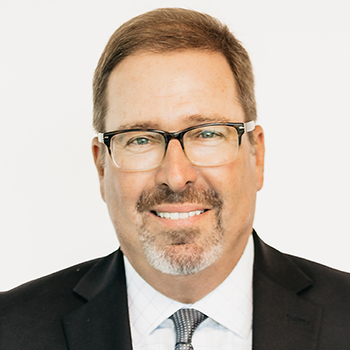
COVID-19 and its aftermath, combined with the tightening labor force and high inflation and interest rates, have changed the near-term fundamentals of senior health care management, especially in the skilled nursing space. As operators work to re-trench and adapt to this new environment, many are exploring any and all opportunities to rebalance operations in a way that optimizes returns and enhances operating margins.
To set the proper context, several challenges frame the near-term outlook for providers:
- Re-building the workforce
- Dealing with changes the economy is having on health care
- Adapting to changes in payment and regulatory environments
- Reconciling the growth of PACE and special needs programs
- Adjusting to changing ways hospitals view post-acute care and services
- Transitioning to a post COVID-19 world
- Refining sales and marketing strategies
- Understanding resident preferences and needs
- Exploring strategic redesign options
Efforts to drive enhanced margins revolve around three primary objectives: driving top line volume, optimizing payor rates, and re-setting operating costs where possible.
The Workforce Conundrum
Workforce realities were trending in a negative direction well in advance of COVID-19. While the age cohort of 85+, the one most likely to need health care, is projected to grow by over eight percent in the next five years, the workforce will grow less than one percent over that same period. Even though, since 2020, most health care sectors have seen their staffing shortages rebound, or even improve, since pre-pandemic levels, skilled nursing facilities are still lagging behind. The skilled nursing workforce has suffered a drop of close to 15 percentage points in the last three years—and the problem will only worsen. Savvy providers understand they can’t fall behind in efforts to attract and retain quality staff. Those that stand to survive share common approaches that include:
- Competitive wages and benefits
- Work that is meaningful
- A respectful culture
- Flexibility that promotes work-life balance
- Help developing career paths
- A diverse and inclusive workplace
- Health and wellness programs to support physical, financial, mental, and social health
Developing Relationships
American Hospital Association statistics show that the average length of stay in a hospital has grown by as much as 20% in some markets.[1] The increase is driven largely by downstream staffing problems, forcing post-acute providers to limit the volume and acuity of the new admissions they will accept. Significant bottlenecks in hospitals and health systems have resulted, but so have unique opportunities to build partnerships as win-win outcomes for hospitals and providers alike. Throughout the country, innovation thrives as hospitals and providers work together to create solutions, typically in the form of bed reservation agreements, joint ventures, and the lease of space with or without gainsharing. Is there a similar opportunity staring at you?
Enhancing Managed Care Contracting and Contract Management
Nationally, Medicare Advantage enrollment has increased to 48% of the eligible population in 2022.[2] There has never been a better time to re-evaluate your managed care contracts. Leverage your quality outcomes and cost increase data to build a sound argument for periodic rate boosts. This step is as important as the management of the contract itself. A favorable contract that is mismanaged can many times be more detrimental to reimbursements than a weaker agreement. Ensure that case management staff understand the contracts thoroughly to ensure receipt of every penny earned and not a penny more.
Quarterly Market Studies
The landscape is changing rapidly. A market study every few years used to suffice. Now, operators should be testing every one to two quarters. In the skilled nursing sector, the focus should be on the assessment of services, whereas in the senior living sector, the focus is more on rent and service rates. Make sure the work here involves both quantitative and qualitative components, meaning you can’t phone it in. There must be boots on the ground, validating what the competition is really doing. This may open your eyes to new opportunities ranging from repositioning and/or the addition of new services.
Leveraging Technology
Technology can be a powerful tool in driving down costs and improving resident and family satisfaction. Many providers are finding innovative approaches that leverage technology to help residents and patients connect with family and to improve the safety of those under their care through risk mitigation. Technology can also be used more analytically, to demonstrate favorable outcomes and investigate negative trends.
Management Consolidation
The reality of the situation is this—as part of retrenchment, you will need to look at resource consolidation. Everything must be on the table, including reducing management team size, sharing resources, and consolidating roles to combine functions within the operation, in particular with smaller rural facilities. Is subcontracting with a centralized service provider actually a more cost effective solution?
Specialty Program Development
Explore and examine your referring hospitals’ geometric mean lengths of stay to identify discharge pain points to which you may have a solution. Assess the market for others that may be working on the development of similar programs. If the signs are favorable, make the leap and invest in training the staff and gaining the competencies necessary to provide the proper care certain conditions require. Review equipment and supply needs with vendor partners that can assist with meeting those needs. Lastly, put in place the infrastructure to record outcomes. Once you can validate success, share those outcomes via a joint operating committee with your referring hospitals and payors.
Rate Optimization
Optimizing payor rates has always been challenging. A mis-coding event is like dropping water into sand—you can’t get it back. There is no substitute for tightening point of care documentation accuracy. Recurring auditing must be a part of any approach to ensure the highest standards are met. More and more, we find that levels of care in the senior living sector have not been kept current. This can have a significant impact on rates and overall revenue. Under the Patient Driven Payment Model (PDPM), focus on the accurate coding of respiratory services and make sure you have re-reviewed your therapy services agreement if you have not done so in some time.
Utilization of Lower Cost Personnel
Leverage the lower cost medication aides in place of licensed nurse vacant positions where appropriate and allowed by licensure standards. Also, explore opportunities to utilize non-licensed aides to supplement certified nursing aide staffing.
Fixed Contracting
Often times, providers neglect to review fixed price contracts once retrenchment is complete. If you have contracts based on square footage and/or occupancy, and you have closed a unit, reopen the agreement and negotiate with your subs. They will likely give you concessions.
Helping Your Organization Succeed
At Health Dimensions Group (HDG), our management, operations, and finance consultants are ready to help your nursing home or senior living community refine its strategy, streamline its operations, and maximize its profits. For more information on our services and what we can do for your organization, please contact us at info@hdgi1.com or 763.537.5700.











